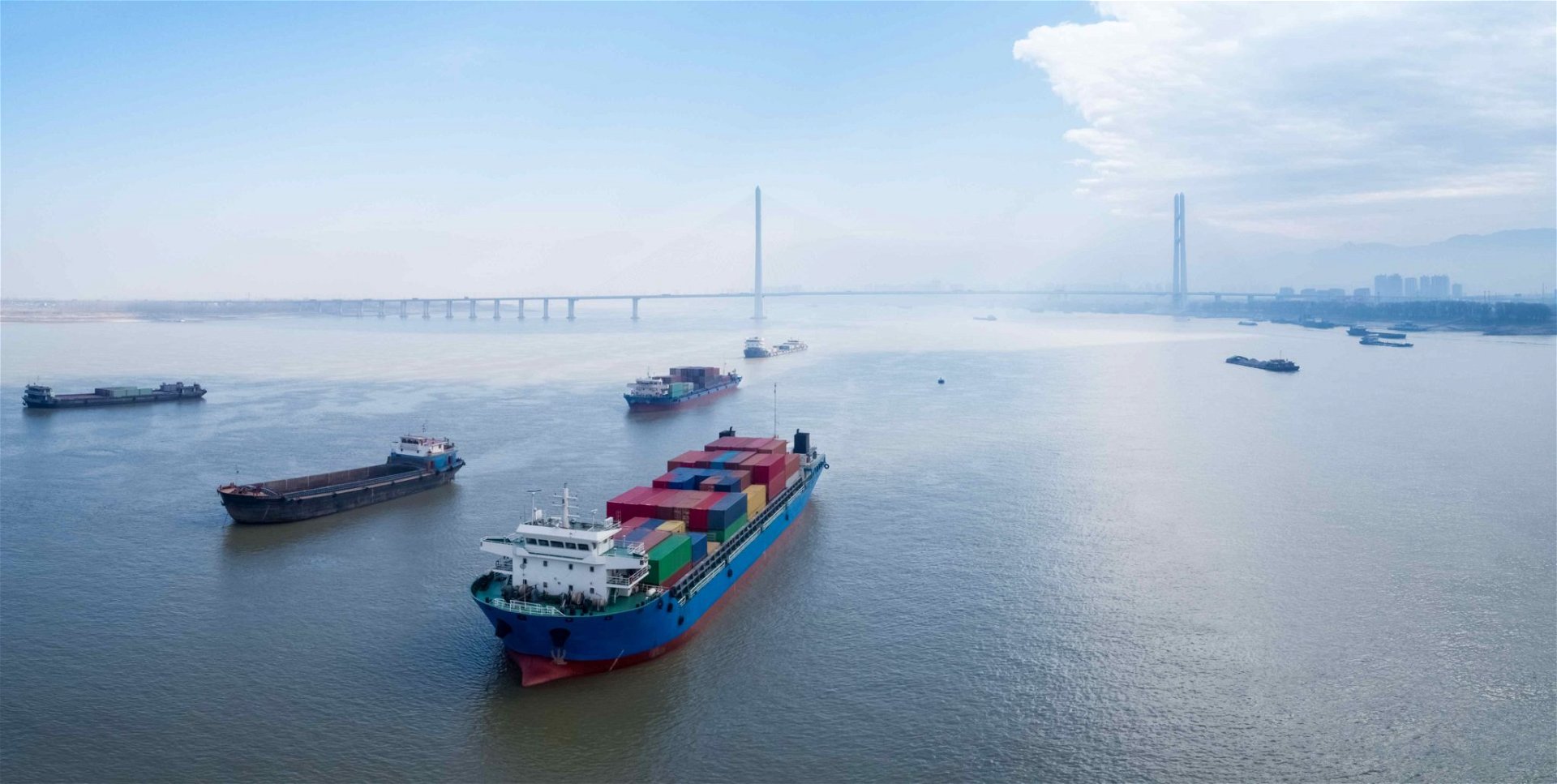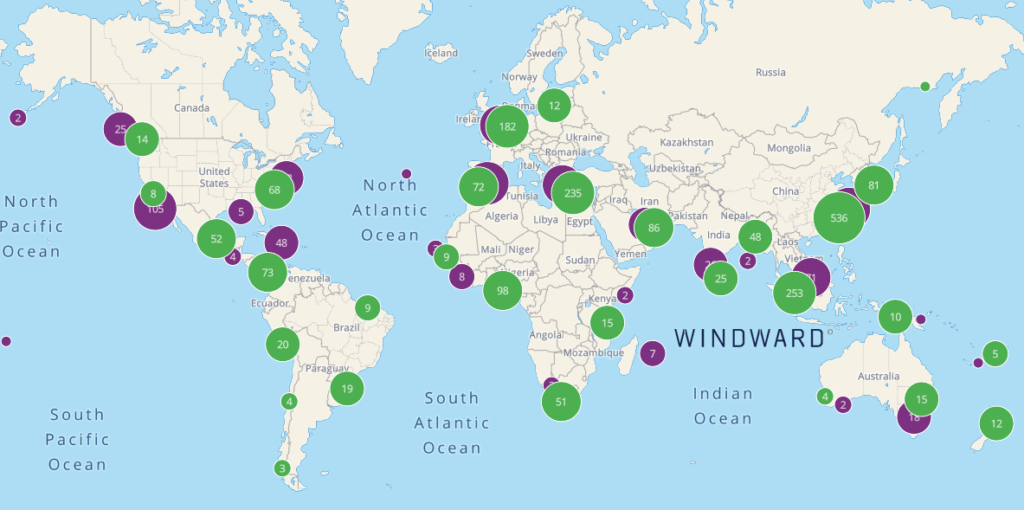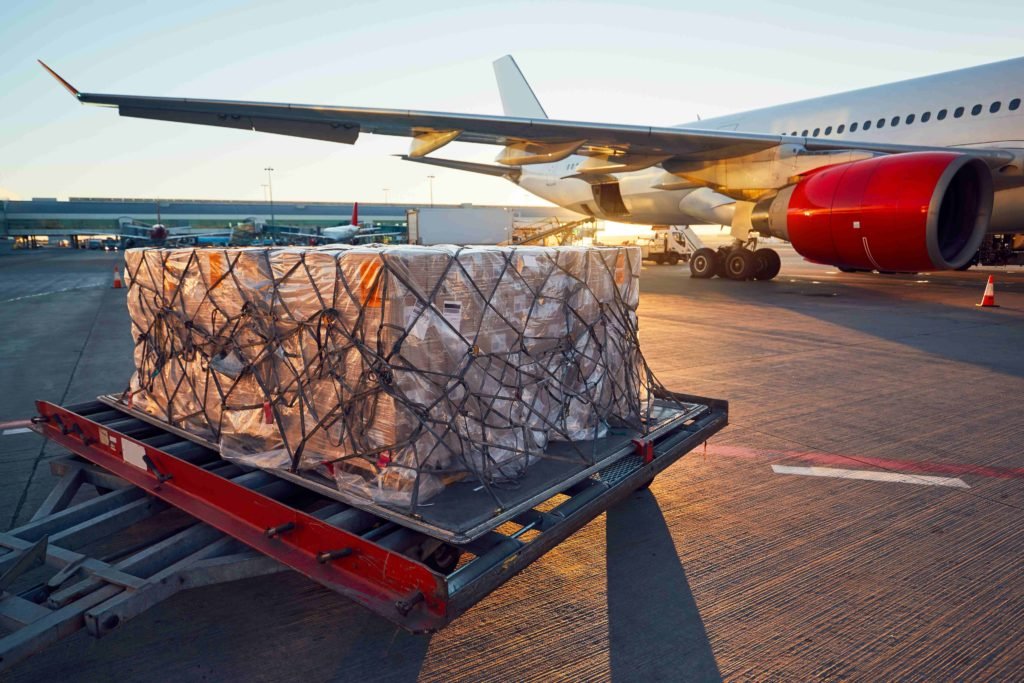Not sure when your project is expected to complete? You aren’t alone. The world over is frantically trying to reach some certainty on when their raw-materials, parts or products are going to arrive. Allowing for some flexibility in a program schedule is common and a manageable risk when it’s off by a couple of days. Not being able to commit to any date is an unprecedented situation, one we seem to be going through right now. So what are some of the reasons leading up to this perfect storm?
China lockdown
China is home to 20 of the world's largest container ports. It should come as no surprise that a lockdown in China is causing serious delays across the world. As of April 28, 2022 China had amassed a fourth of the world's vessels waiting outside of its ports from all the vessels waiting outside ports globally!
The image above clearly indicates the vessels waiting to dock doubling from a similar period two months earlier. Between April 12-13, 2022, 1,826 container vessels were waiting outside of all ports worldwide. That’s 20% of all container vessels globally! Of which 25% of vessels were waiting outside Chinese ports. To put this into perspective each vessel can carry anywhere between 10,000 TEU’s to 21,000 TEU’s. TEU’s being a twenty foot equivalent container. If we had to consider a conservative outlook of 10,000 TEU’s per vessel, that’s approximately 18million containers anchored, waiting to dock and reach their desired destination.
The repercussions have led to freight price hikes, delay in parts or complete products from the east and a lack of containers available in Europe and North America required to load & receive products from international markets. The extended dwell times of vessels at ports has an additional knock on effect to the following routes being canceled. There are no roll over bookings and vessels are already full with the new schedules. The lack of additional vessels to deal with the added volume along with newer vessels only coming online by 2025 has not just painted a dark picture for 2022, but 2023 as well.
Ukraine Conflict
The war in Ukraine has sent fuel prices among other commodities soaring, which has put further pressure on customers as existing freight bookings are getting canceled for a more updated and understandably higher freight rate.
Air Freight
The lack of reliability has pushed suppliers to choose Air Freight over Sea Freight to meet customer deadlines. Air Freight pricing is approximately 50% higher than ocean freight. This increased demand has not only pushed air freight costs even higher further but has also created growing wait times to book a plane to take the goods.
Regional Effect
With Saudi Arabia, Qatar and UAE continuing to push forward in development and no respite in completion dates shifting, delays and cost hikes are expected to push frustration levels, penalties and cash flow to a breaking point. Patience and understanding is required to move through the next twelve months or the problem will likely be exacerbated with strikes and companies filing for bankruptcy.
While ego, vision & pace has put the Middle East on the map, it remains to be seen whether logic prevails and the development is curtailed to keep businesses thriving for the long run.
Possible Solutions
Ongoing projects
• Bring all stakeholders back to the table and have an honest conversation on timelines and deliverables. Everyone is committed to delivering the project on time regardless of how it may seem.
• If your products have not left the manufacturing facility yet and are likely to get delayed, inquire about the upcharge to shift some of the elements to air freight and make your decisions based on the information presented.
• Most suppliers can provide stock products as an interim solution. Make sure to ask for it, if it helps you get up and running.
• Understand that delays and extra charges may arise. Everyone across the value chain is doing their best to move the goods on schedule without additional fees, but in this unstable period, delays and additional charges can occur
Projects not started
• An integrative process is key. Bring together key members of the supply chain at the concept stage to understand the ground reality & plan using that information.
• A new procurement strategy:
• Pre-construction Services Agreements or a Two stage tendering process to facilitate early contractor / supply chain engagement, advice on lead times, logistics, alternative solutions and early procurement of lead items.
• Procure products at the design stage from the suppliers rather than a contractor. This approach may provide programme advantages since orders can be placed at an earlier stage of the project and can also provide potential cost savings on the package in terms of contractor’s overheads and profits. However, this approach needs to be balanced with the risk associated with product delivery and any necessary interfacing with the Contractor’s works.
• Buffer time on your project for freight pricing and transit time for changes. Costs due to unforeseen delays or limited capacity can arise, so be prepared. At the time of writing these regions need additional time on sea freight alone
• Northern Europe: 2 weeks
• North America: 3-4 weeks
• China: Unclear
• Southern Europe: 1 week
• UK: 1 week
• Explore warehousing options to mitigate the effects of bringing in the products earlier to avoid delays. It’s a more cost effective option than air freighting products to meet a deadline.
• Consider leveraging local products & production where possible to avoid the reliance on international shipping.
• If Project Management isn’t your core business, ensure you get a PM onboard to manage all the moving parts, the global situation is already unprecedented, ensuring you have the necessary resources and expertise is critical to your projects’ success.
As most global situations arise, the world shows resolve by unifying to find a solution. While the grim situation of sea freight is predicted to stretch across Q1 of 2023, we remain optimistic that the ports and freight liners will course correct before the year ends.
Sources
- https://windward.ai/blog/container-vessel-congestion-in-china/
- https://windward.ai/blog/chinese-port-congestion-stalls-container-vessels-worldwide/
- https://www.sea-intelligence.com/press-room/137-schedule-reliability-improves-again-in-march-2022
- https://www.recyclingtoday.com/article/container-shipping-industry-outlook-2022-alixpartners/
Article info
Article:
Date added:
1 May, 2022









